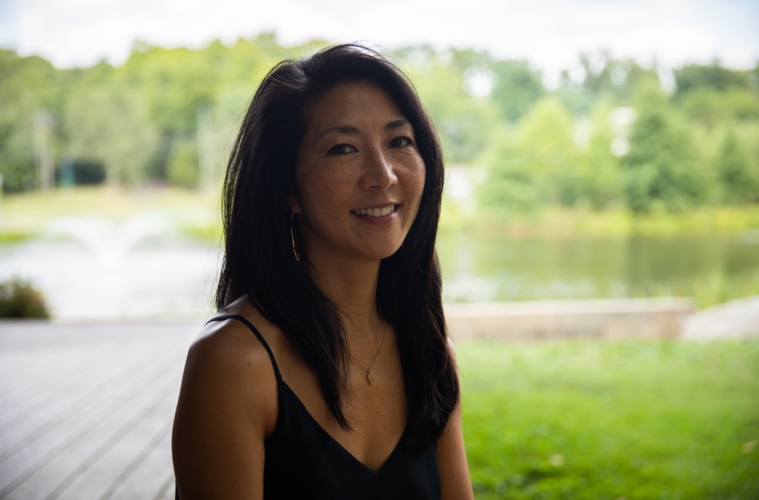The first time Kaori Nakamura ’93 met a 27-year-old client at New York Presbyterian Hospital’s Center for Autism and the Developing Brain in White Plains, N.Y., he could barely make eye contact.
“His mother did most of the talking,” Nakamura recalls.
She started working with this young man, who’d been diagnosed with autism spectrum disorder (ASD), as his occupational therapist — a role she describes as “helping people with what’s hard for them,” so they can reach their highest level of independence.
A key component of occupational therapy is being able to analyze a person’s needs on-the-fly and adapt their treatment accordingly. “Every session is an evaluation,” Nakamura says. Occupational therapists are specialists in assessing the cognitive, visual perceptual, motor, sensory, and psychosocial components of a task and then creating a treatment plan that can improve a person’s ability to function and perform those tasks.
As she interacted with this client, she picked up on his areas of readiness — where she could sense an opportunity for him to gain comfort and confidence. And as they spent more time together, he opened up to Nakamura and shared his interest in exercising more, dating someone, living alone, and finding a job. These were all big leaps from where he was at the time — living with his family, being unemployed, and lacking the social skills to interact with anyone outside of close family and a few friends.
“He said, ‘I’d like to get married someday. Is that even an option for me?’” she remembers.
But, this is exactly where Nakamura thrives as an occupational therapist. She told him what she tells many clients she works with: “You have goals and you can identify where you’re struggling, and I’m here to help you see what you’re capable of doing and what we can work on.”
She started small, helping him build confidence to leave his safe spaces and navigate new situations. They took a trip to the hospital gift shop to buy his mother a scarf. Next was helping him plan an outing to the grocery store and then the mall. And, after some time, he took a solo train trip to New York City for a course. Nakamura helped him develop the social and professional skills he needed to tackle each of his goals, which empowered him to radically change his life in just a few years.
“When I met him for the first time, he could barely talk to me,” she says. “Three years later, he has a full-time job in a hospital. He supports himself. He has found an apartment. He fell in love. And he’s married.”
At the center, Nakamura is the sole occupational therapist and works with the full lifespan, from early childhood to older adults. She embeds treatment into play, self-care, and daily activities to help facilitate progress toward each individual’s needs and goals.
Although Nakamura (who was an Asian studies and art & art history major at Colgate) says she never expected to become an occupational therapist, now she can’t imagine doing anything else. When she first heard about the profession, she thought of her cousin in Japan who has autism and how much occupational therapy would have helped him. It inspired her to go back to school and change careers from being a research editor. After 25 years in the field, she still considers her work a blessing.
“I find all people fascinating. I learn what’s most important to each person I work with,” she said. “And I have the opportunity and responsibility to help them function at their optimal level and with dignity.” She likes to tell her patients and patients’ families, “Although I love working with you, the ultimate goal is for you to not need me.”
Also working at the Center for Autism and the Developing Brain is Tali Filstein ’21, who is a psychology technician. She administers the cognitive and diagnostic testing for young patients who are being evaluated or reevaluated for ASD. Filstein also assists in the Early Intervention classroom, where she works alongside Nakamura to treat children between 12—36 months of age.

